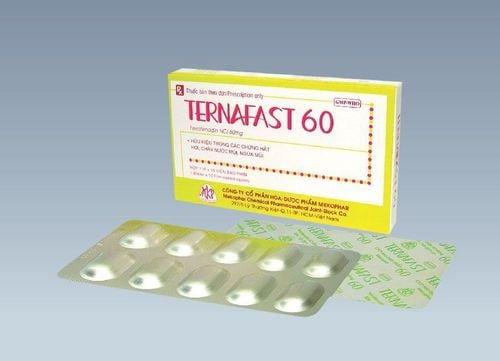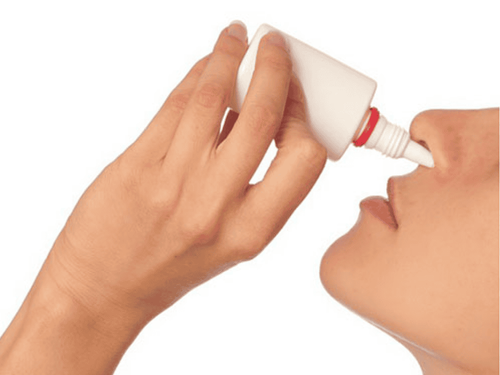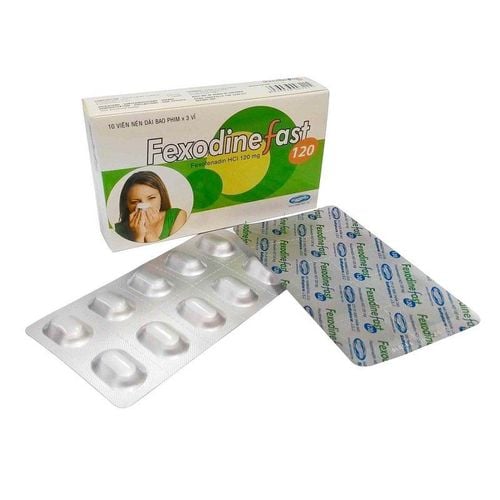This is an automatically translated article.
Hasalfast is indicated for the symptomatic treatment of allergic rhinitis in adults and children over 12 years of age. To learn more about the ingredients, usage, and uses of Hasalfast, please follow the article below.
1. What is Hasalfast?
Hasalfast drug belongs to the group of anti-allergic drugs and is used in cases of hypersensitivity. Hasalfast's main ingredient is Fexofenadine hydrochloride, manufactured by Hasan - Dermapharm - Vietnam Joint Venture Co., Ltd. Hasalfast is prepared in the form of film-coated tablets, packed in boxes of 10 blisters, each blister of 10 tablets.
2. Uses of Hasalfast
Hasalfast is indicated for the following cases:
Adults and children over 12 years old who need to treat the symptoms of allergic rhinitis. The symptoms that are treated are highly effective such as: Runny nose, runny nose, sneezing, itchy throat, itchy palate, itchy eyes, red and watery eyes.
3. Dosage and usage
3.1. Dosage The drug is mainly used to treat symptoms of seasonal allergic rhinitis with specific dosages as follows:
For adults and children from 12 years of age and older: Use a dose of 60mg x 2 times / day or a dose of 180mg x 1 time/day. For patients with renal failure: Use the starting dose is 60mg x 1 time / day. For children from 6 to 11 years old: Use dose of 30mg x 2 times/day. For children with renal failure: Use with a starting dose of 30mg x 1 time / day. In case of chronic idiopathic urticaria: For adults and children over 12 years old: Use a dose of 60mg x 2 times/day.
For patients with renal failure: Use with a starting dose of 60mg x 1 time / day. For children from 6 to 11 years old: Use dose of 30mg x 2 times/day. For children with renal failure: Use with a starting dose of 30mg x 1 time / day. 3.2. How to use The drug is prepared in the form of film-coated tablets, taken orally, the time of taking the drug does not depend on the meal. It is best to use fexofenadine hydrochloride at least 2 hours apart for antacids containing aluminum or magnesium gels.
4. Note when using
4.1. Contraindications The drug is contraindicated in anyone with a history of allergy, hypersensitivity to fexofenadine hydrochloride or any of the active ingredients or excipients in the drug.
4.2. Side Effects The frequency of adverse events, including somnolence and somnolence, was independent of dose and was similar across subgroups divided by age, race or sex. Some common side effects include: cold and flu virus infection (accounting for 2.5%), nausea (accounting for 1.6%), dysmenorrhea (accounting for 1.5%), drowsiness, somnolence (accounting for 1.3). %). with other drugs via the liver mechanism.When used in combination with fexofenadine hydrochloride with erythromycin or ketoconazole, the plasma concentration of fexofenadine hydrochloride can be increased 2 to 3 times, but this increase has no effect. on the QT interval, and when compared with the above drugs alone, did not show an increase in any adverse reactions.Fexofenadine hydrochloride did not affect the pharmacokinetics of ketoconazole or erythromycin. There is an interaction between fexofenadine hydrochloride and omeprazole . Antacids containing aluminum or magnesium gels have the potential to counterfeit m bioavailability of the active ingredient fexofenadine hydrochloride. 4.4. Precautions for use Particular care should be taken when administering the drug to patients at risk for cardiovascular disease or with a pre-existing prolonged QT interval. No other antihistamines should be taken during treatment with fexofenadine. Use with caution and appropriate dosage adjustment in patients with impaired renal function, because plasma concentrations will increase due to prolonged half-life. Care should be taken when using the drug in the elderly (from 65 years of age and older), because it often causes physiological decline in renal function. Fexofenadine should be discontinued at least 24-48 hours before injectable antigen skin tests are performed. Fexofenadine is less likely to cause drowsiness, but it should be used with caution in people who have to drive or operate machinery. It is not known whether the drug is excreted in human milk, so caution should be exercised when fexofenadine is administered to a nursing woman to avoid adverse effects on the health of the infant. Since there are no adequate reports on the effects of fexofenadine on pregnant women, the benefits and risks should be weighed before use in pregnant women. Above is information about the ingredients, uses of Hasalfast as well as its use and effects. Hopefully, the article has provided you with useful information and helped you have the safest and most effective way to use the drug.













